‘Not afraid’: The Texas pilot flying patients to abortions
As abortion becomes less accessible in the US, one pilot is determined to help vulnerable patients despite the risks.
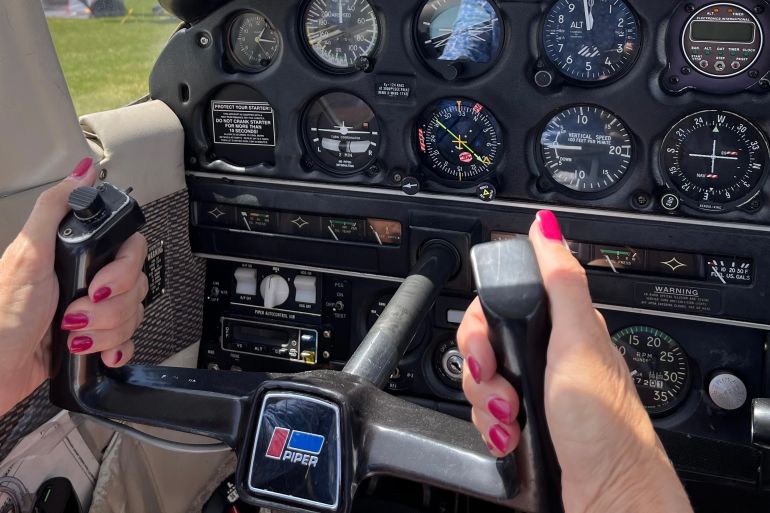
It was summer, midday and hot when the teenager arrived at the tiny regional airport. She was wearing pyjamas and “carrying a stuffed animal for support,” recalls Michelle, who was there to meet her.
The girl was seeking an abortion, and Michelle, a licensed pilot, was about to fly her to another state so she could get one.
Keep reading
list of 4 itemsHow a Gaza protest at Indiana University became a battle for free speech
UK starts detaining asylum seekers to be deported to Rwanda
‘We didn’t expect to find bones’: Inside one Gaza family’s nightmare
Just weeks earlier, on June 24, 2022, the United States Supreme Court had overturned Roe v Wade, the 1973 ruling that enshrined the legal right to abortion, thereby allowing states to enact bans. The girl’s home state had a “trigger law” on the books and had almost immediately banned abortion with very few exceptions. Now she needed to travel hundreds of miles to the nearest clinic offering abortions.
With her older sister, who looked to be in her 20s, she climbed onboard Michelle’s four-seater aeroplane. She had never been on a plane before.
The girl was shy and quiet while her sister asked questions about the plane’s safety procedures, how high they would fly and how long the flight would take.
As they flew over the yellow fields and muscular rivers of the South, Michelle pointed out landmarks to the older sister while the girl slept.
It was Michelle’s first flight with Elevated Access (EA), a nonprofit that organises a network of pilots to discreetly transport patients who otherwise do not have the means to cross state borders for an abortion.
When they landed, Michelle handed the sisters over to another volunteer pilot who would fly them on to their destination. Because patients in states with abortion bans typically have to travel hundreds of miles and small aircraft like Michelle’s fly considerably slower and hold less fuel than commercial planes, multiple volunteer EA pilots often share the job.
“The age is heartbreaking,” Michelle says of her young passenger. She’d nursed some anxiety about the flight beforehand because she felt so much responsibility for her passengers. But once they reached their destination, she says from her home in Texas, “I felt really good. I felt emotional about it.”
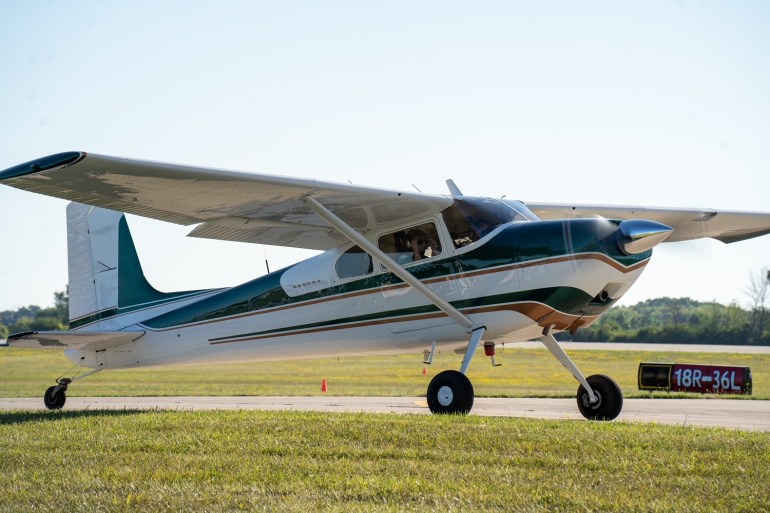
‘We’re on a mission’
Michelle, a 61-year-old college lecturer in English literature, has been a licensed pilot for more than 20 years. Her surname is being withheld due to EA policy to protect volunteers and patients as state legislators introduce dozens of laws and restrictions on abortion, sometimes imposing criminal penalties for those who help women and girls obtain the procedure. The week the Supreme Court released its ruling – which has led to abortion being effectively banned in 15 states, primarily in the South, and stricter gestational limits on abortion imposed in other states – Michelle signed up with EA.
When EA had launched just three days before the Supreme Court’s decision was leaked in May 2022, it had envisioned a relatively small operation, helping women and girls who would struggle to reach abortion clinic appointments. Then, when Roe v Wade was overturned, almost overnight, legal abortion clinics shuttered across the country, and the need for EA flights exploded. Michelle didn’t think twice about applying to volunteer. Within two weeks, she had her first mission.
Michelle was initially nervous over the amount of coordination required for that first flight: She was simultaneously texting the sisters, the pilot she’d hand them over to, EA’s coordinator and flight dispatchers.
EA partners with local abortion access organisations, groups that aim to provide financial and logistical support for people seeking abortions. When appropriate, these partner organisations refer patients to EA. Most patients referred to EA have to travel for in-clinic abortions as opposed to medication abortions, where pills are used to induce a miscarriage, and are in difficult and isolating situations.
“We’re not your first option, right?” Fiona, an EA spokesperson, explains over the phone, referring to the people seeking EA’s help. “If you’ve got a supportive spouse or a supportive mother and a car that works and savings, you can probably figure it out” and arrange travel to a state where abortion is legal. But, she says, those without such resources must “rely on the kindness of strangers”, including EA pilots.
Flying in private planes removes other hurdles as well. People without documentation can’t board commercial flights, but they can fly in private planes. Airports are also much more accessible through EA. There are about 10 times as many public airports as commercial airports, and according to Fiona, about 90 percent of Americans live within 20 minutes of one.
Michelle was used to flying friends around for vacations, not transporting vulnerable strangers for urgent, criminalised medical procedures.
“For them [the sisters], it must have been a real whirlwind,” she says. “There’s a lot of trust involved.” Although she’d never met the sisters before and would likely never meet them again, “we’re joined in the weird nexus of the times,” she reflects.
When the flight last summer reached the handover point, the sisters deplaned. The next pilot was also a woman, which is notable, given that fewer than 10 percent of US pilots are women. Fiona estimates that the EA network has more than double the national average for female pilots. Still, most of their volunteers are men, which, she adds, is rare among abortion aid organisations.
Out on the tarmac, Michelle remembers telling the other pilot that she would love to talk about what they are doing, and the pilot in turn telling her, “We’re on a mission. There’s no time for chatting, … but we’ll do it sometime.’” And with that, the other pilot jumped in her plane and took off with the patient and her sister, heading for the next location.
No shrinking violets
Before EA, other than a couple of college protests in the 1980s, Michelle had never been involved in activism. She read the news, voted and had discussions with friends but didn’t engage much beyond that. She’d grown up on her parents’ cattle ranch in Texas, riding horses and helping with chores. By eight, she was driving the tractor. By 10, she was putting down salt blocks for cattle in summer, cracking the frozen watering tubs with a hatchet in winter, and driving the pick-up truck around the ranch with her dad.
“We were farm kids,” she recalls. “Swimming in dirt tubs, catching frogs – it was kind of a feral existence.” Her upbringing made her fiercely independent and resourceful – and did away with any notion of gender roles.
“Most everyone I know who grew up on a farm aren’t shrinking violets,” she continues. “Girls and women [on ranches] are tough. They know how to ride horses. … Growing up on a farm, everybody, boys and girls, were capable and encouraged.” Michelle still possesses the rancher’s pragmatism she grew up with. At home, she’s orderly and self-sufficient. She’s efficient even in speech: brisk with hellos, quick with goodbyes. She speaks with confidence in a dry throaty voice that rarely pauses to hedge, telling rolling stories that bounce along like tumbleweeds.
She first got into flying almost by accident. Her father was a pilot, and she enjoyed skydiving in college. She always “liked the air”. Then, one day, when she was in her 30s, she saw a newspaper advertisement for a “discovery flight”, a quick $40 cruise over her hometown. She enjoyed it so much she went on to get her pilot’s licence, and, in her own plane, began flying family members and friends around for fun or business trips.
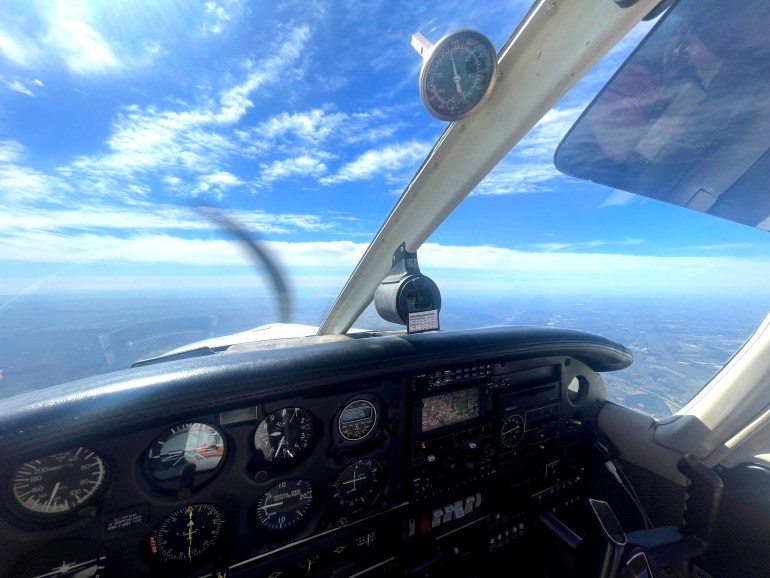
A pragmatic way of helping
Michelle was 10 when Roe v Wade legalised abortion across the US in 1973. Reproductive injustice still touched her young life. In high school, a close friend died unexpectedly. She heard, through peers and rumours, that it was due to a self-induced abortion. But she never got a full explanation. It was all kept “hush hush”, she says. The friend’s death was shrouded in shame and secrecy.
“They [the adults] wouldn’t tell us,” Michelle recalls. “How does somebody just die?”
Back then, in the 1970s, unplanned pregnancies weren’t discussed openly, but she says “everyone knew” that if a classmate went to Florida to “visit her aunt” for a semester, “it meant she was going to have a baby”.
Later, when Michelle was in college, one of her teenage cousins revealed to the family that she was more than five months pregnant. At first, her cousin thought she’d be able to hide the pregnancy.
“There was a great to-do,” Michelle says, describing how the family scrambled to find a clinic that would provide an abortion late in the pregnancy and how again it was all kept “hush hush”. She remembers that as a traumatic time but also recalls how, during the 1980s, there was a shared feeling of hope as contraceptive and reproductive health access expanded in the US. It was hard-won progress, she says, which makes it “pretty alarming” to see reproductive rights rolled back to the point where there is less access today than there was when she was a child 50 years ago.
When Roe v Wade was overturned, she at first felt “a little helpless”. She wasn’t convinced that “making a hand-painted sign and marching at a courthouse” would be an effective response, and she had her doubts about the impact of petitions or donations. But flying a plane – that she could do.
“This is a much more pragmatic tactic of helping,” Michelle says brightly. “I can’t solve the gumming up” of legislation. “But I can help with logistics. It feels more active. I see some immediate benefit.”
The week the ruling came down, she found an EA post on social media. She thought to herself: “I’m privileged, I’ve got an aeroplane, I care – I’ll reach out.” She applied immediately. “It was as simple as that,” she says.
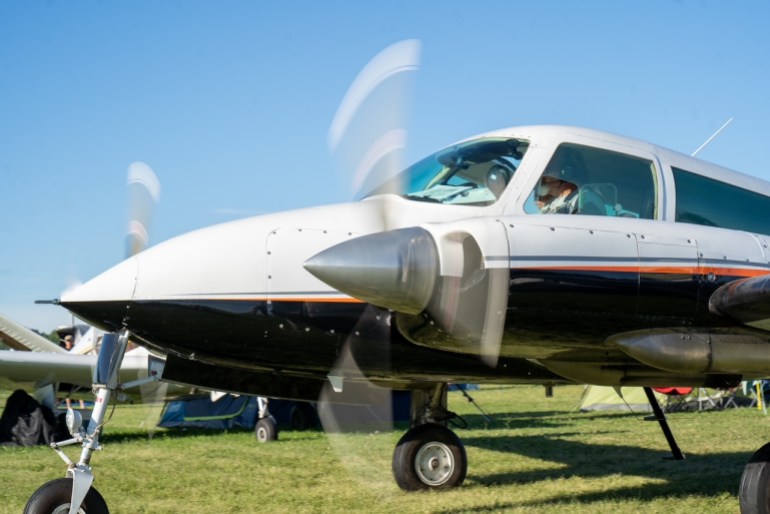
‘Try to put yourself in their shoes’
Michelle, who says she has friends who are both pro- and anti-abortion rights, approaches the abortion debate through the lens of her role as an educator. As she frames it, the problem stems from a simple lack of understanding: a dearth of the critical and empathetic thinking she encourages among her college students.
“Instead of having a knee-jerk [reaction] and saying, ‘That’s bad. You’re a bad person,’ try to put yourself in their shoes and imagine: What is this like? You’re knocked up at 14 from your uncle, and your state just made this [getting an abortion] illegal. What are you and your parents supposed to do?”
If only people really took the time to imagine the experience of an unwanted pregnancy, then maybe they’d understand, she suggests. If somebody thinks, “‘People who are driving people to abortions are murderers’ – well, you’re not thinking this through.”
Her effort to empathise goes both ways. “Characterising all right-to-lifers as evil-doers and oppressors isn’t right, either,” she reflects. She even suspects that in some ways, her anti-abortion friends’ political philosophies, especially the “conservatives’ strong interest in individual rights”, might offer some middle ground. “Look, I acknowledge this is complicated,” she’d like to say to them. “But dogma is just a bad way to make policy.” Surely, she believes, many of the anti-abortion absolutists would feel differently when they learn about pregnant women nearly dying after a miscarriage due to the abortion bans. “Maybe they’re all misogynists,” she considers. “But maybe they just didn’t think this through.”
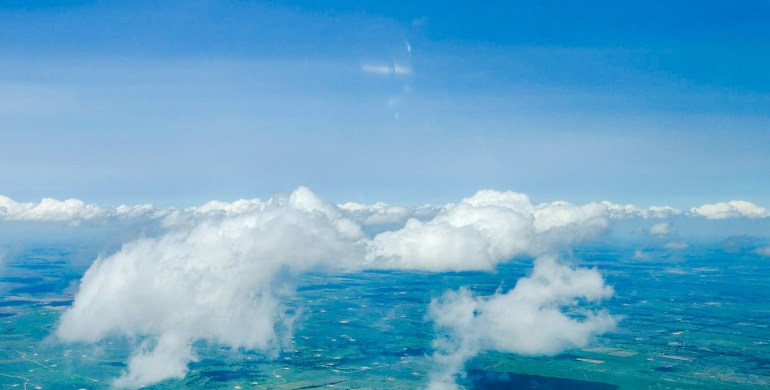
‘Handshakes of confidence’
Michelle says she’s carried out four or five missions so far. When she gets a call from one of the EA leaders, she gets to work. Since patients need to schedule appointments, and abortion clinics in access-friendly states are increasingly overburdened, she’ll typically have about two weeks to prepare. If the appointment is midweek, she’ll ask for vacation time off work. She pores over calendars and weather charts to ensure the trip’s timing will work. Sometimes she may need to stay overnight in a hotel at the drop-off point. She doesn’t get compensated by EA, and she pays for the expenses, which she says she’s happy to be able to do. She estimates a typical EA mission costs her about $400.
For EA volunteers, teamwork is just as important as the weather charts. The missions require coordination with and belief in total strangers – pilots and abortion aid group members they have never met – a kind of blind chain of faith through the skies over several states. With passengers, Michelle says she keeps things pretty business-like. “My job is to get them there”, she says. She does not learn patient or pilot last names and describes her work as “handshakes of confidence between different links in the chain”.
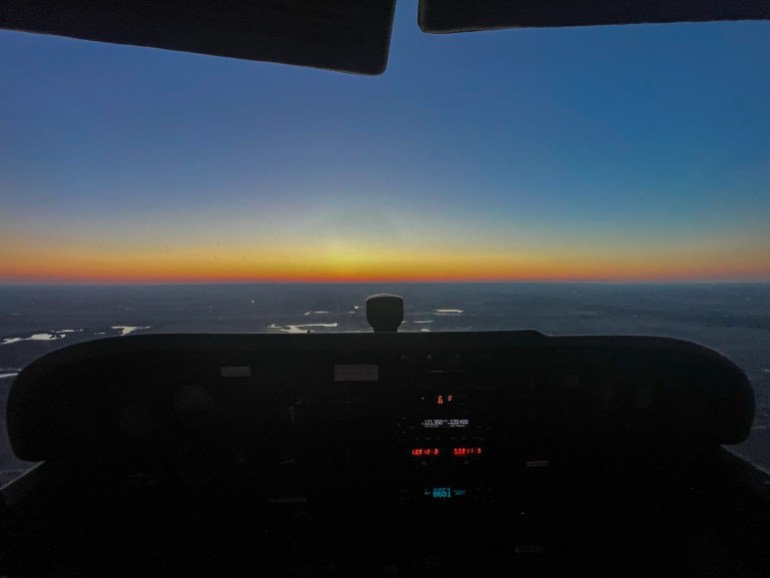
Longer journeys
As more US states pass abortion restrictions, patients must travel farther to access an abortion.
EA doesn’t disclose details about its missions, but Fiona confirms, “The vast majority of flights involve multiple states, so our pilots are flying hundreds of miles.”
Say, for example, that a woman or girl in Opelousas, a small city in southern Louisiana, needs an in-clinic abortion. The nearest abortion clinic to her is in Carbondale, Illinois. To reach it, she would need to drive more than 1,000 miles (1,600km), about a 23-hour round trip. Alternatively, she’d need to take two buses (about $70) to the nearest airport in Baton Rouge, then fly to the clinic in time for her appointment. (Booking a flight from Baton Rouge to Chicago two weeks in advance currently costs about $500.) People seeking abortions must also consider the cost of the procedure itself, which healthcare plans are not required to cover. (Abortions in the US typically cost $580 to $2,000.)
These longer distances necessitate more journey time, more flight legs and more chances for things to go wrong.
Recently, Michelle was part of a mission that required three legs. Michelle flew the three-hour middle leg.
But on the morning of the mission, the first pilot texted the other two: “I think we’ve got a problem.”
The pilot was waiting at the airfield, but the patient was nowhere to be found. Michelle and the third pilot began adjusting their flight plans given the delay. If delayed enough, weather or other obstacles could prevent them from reaching the patient’s appointment. Soon, the pilots learned the problem: The patient’s car wouldn’t start.
The patient, who Michelle estimates was in her 20s, jumped on her bicycle and began hurriedly pedalling to the airport. She hoped she was headed in the right direction. “Wish me luck,” she texted the first pilot. Then her phone died.
The minutes ticked by. After half an hour, the first pilot told the other pilots that he was going to go look for her. He trekked towards a dusty country road and continued walking until, in the distance, about half a mile off (800 metres), he saw someone on a bicycle. They managed to make it to the rendezvous in time to meet Michelle.
Michelle finds the passenger’s journey – between her car not starting, the bike ride, getting lost and being passed among three pilots – a testimony to what some women now have to go through to access an abortion. The patient had left her hometown at 7:30am. The sun would be down by the time she reached the East Coast.
On top of the length of the journey, their time and costs, Michelle, the other EA pilots and their passengers face the possibility of legal repercussions. In April, Idaho became the first US state to restrict some out-of-state travel for abortions. It is now a crime punishable by years in prison to help a patient under 18 leave Idaho to get an abortion without their parents’ permission. Abortion advocates worry that similar legislation is on the way in other states that would impose prison time on people who help adults. And EA pilots may face penalties even in places where such aid is not strictly criminalised. If/When/How, a network of reproductive justice lawyers and legal professionals, noted in a 2022 report that dozens of people have faced criminal charges for self-administering an abortion or helping someone with one even when their states did not explicitly criminalise abortion. Instead, prosecutors applied criminal laws meant to address issues like mishandling human remains, concealment of a birth, practicing medicine without a license or child abuse. Most of the cases the group examined emerged in Michelle’s home state of Texas.
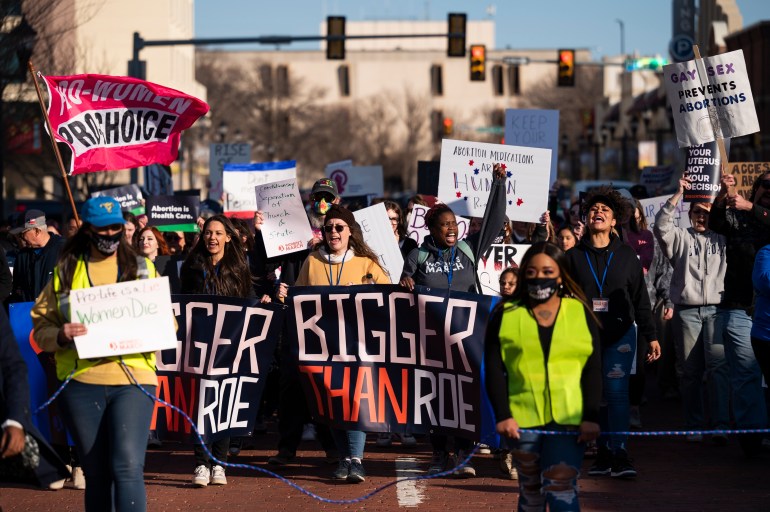
‘Bounty hunter law’
Michelle has mentioned to a few pro-abortion rights friends that she’s using her plane to help patients access abortions and has largely received “very, very, very positive responses”. And yet, she’s aware that her work puts her at risk. In Texas, particularly, even friends and family could put her in jeopardy.
“The world is a big, strange place,” she says carefully. “I mean, I would trust all of my friends and colleagues. But … the law that Texas passed [in 2021] that basically incentivised family and friends to turn people in” gives her pause. Michelle is referring to what opponents have called Texas’s “bounty hunter law”, which allows private citizens to file lawsuits worth tens of thousands of dollars against any person who “aids or abets” an abortion. One such lawsuit was dismissed in March; however, that same month, the law’s architect began representing a Texas man who is suing three friends of his ex-wife for $1m each for helping her obtain an abortion.
“I don’t tell my [extended] family,” Michelle says. “This is so new. I don’t want to put them in a bad situation. Things could get really bad.” And not all of her friends are supportive. She doesn’t publicly post on social media about her missions, but when she’s shared posts from EA, some friends have left comments like “This is murder” or “I hope they lose their licence and get what’s coming to them.”
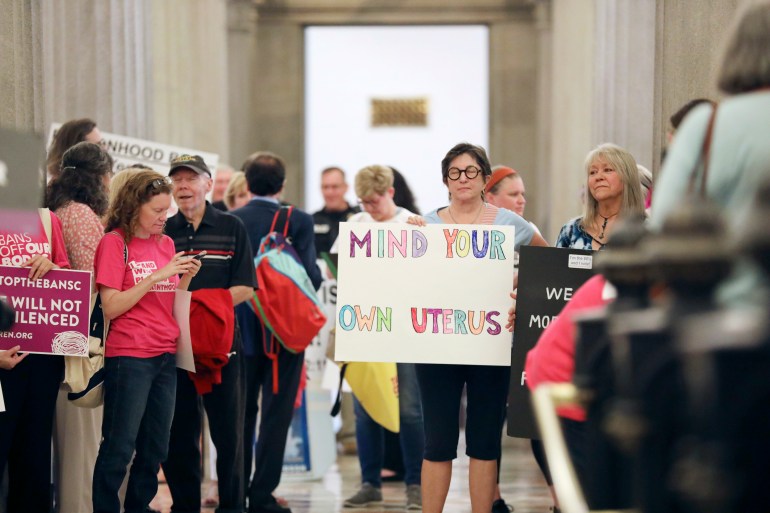
‘I’m not worried about the future’
Given the recent legislation in Idaho, Michelle says she’s “assuming somewhere down the line, some right-wing prosecutor is going to … arrest or charge” someone like her for facilitating travel. When it does happen, she believes it “will be a test case” with the question at stake being “whether we’re free to drive or fly around the country with our passengers”.
She adds matter-of-factly that while she would rather it not be her, she is “not afraid”. “It’s just a hassle,” she explains.
But the threats she and other EA volunteer pilots face may not only be legal. She recently saw a comment under an EA social media post that threatened to attack volunteer pilots and planes.
But Michelle isn’t scared – neither about the spectre of arrest nor the future of the American political landscape. “I teach young people,” she explains, “and I’m not worried about the future of the world.” Her students “see the older generations as having failed them. That we’re going to leave them a terrible world,” she says. Their political stance, she adds, is: “We want a fair world for us to grow up in.”
‘They are in a hard situation’
Michelle will keep on volunteering because she knows her passengers are among the most socio-economically vulnerable. “The people who can afford [to travel] don’t use EA,” she explains, because EA’s partner groups refer only patients who most need the service.
“The general public ought to know that compassionate helping people isn’t ‘terrorism’. It isn’t even particularly activist,” Michelle says.
“I believe in civic responsibility and the social contract. We owe something to one another. … We agree to be good to each other, so they’ll be good to us.”
Her passengers are seeking EA’s help because “they are in a hard situation, and the state is not helping. … These aren’t whimsical decisions at all.”
“Their circumstances are theirs,” she stresses. “And it’s real.” Anyone who reflects on “this extraordinary trip of the bicycle and three aeroplane rides – I mean, who would put themselves through that just on a whim? Nobody would.”
Roughly 22 million US women and girls of reproductive age now live in states where abortion access is heavily restricted, according to Human Rights Watch. In April, Florida Governor and Republican presidential candidate Ron DeSantis signed a six-week abortion ban into law, which, pending a court ruling, will tighten the previous 15-week ban. And later that month, without public notice, the South Carolina governor signed a six-week ban into law, which is on hold pending review by the state Supreme Court. If the courts uphold the bans, Virginia and North Carolina will be the last two states in the South where patients can access legal abortions past six weeks.
“We will need many more pilots to help if the entire South goes dark,” Fiona warns.
Michelle knows that this may mean more and longer flights for volunteers like her. For now, she’s awaiting instructions for her next mission.